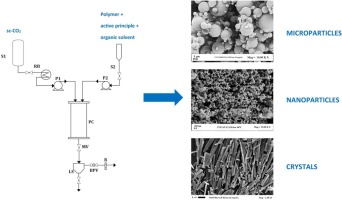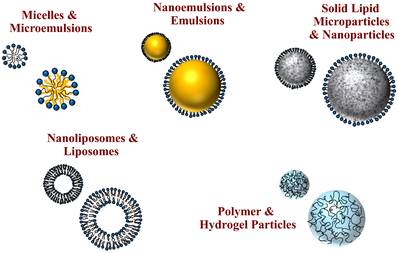- Home
- Blog
- News
- Basics
- Sources
- Agencies, Regulatory & Organisations
- CERSI Excipients Browser
- Excipient Report
- Excipient DMF List
- EXCiPACT Certified Companies
- Excipient Documentation
- Excipient EINECS Numbers
- Excipient E-Numbers
- FDA Inactive Ingredient List
- FDA GRAS Substances (SCOGS) Database
- IPEC Americas
- USP - U.S. Pharmacopeia
- Definitions
- Whitepapers / Publications
- Supplier
- Services
- Media
- Events
- 1st pharmaexcipients Poster Award
- Event Calendar
- Events featured by pharma-excipients
- 4th Annual Formulation & Drug Delivery Congress
- DDF Summit
- ExcipientFest Americas
- ExcipientFest Asia
- Global CompliancePanel
- International Conference and Exhibition on Pharmaceutics & Novel Drug Delivery Systems
- Formulation & Drug Delivery USA Congress
- Laboratory Medicine 2018
- Making Pharmaceuticals Europe
- Making Pharmaceuticals Exhibition
- Pharma Integrates
- PharmaExcipients China @CPhI China
- TTC Technology Training Center
- Jobs
- Online Sourcing
- Contact
04. October 2018
n recent years there has been a growing interest in solid lipid-based systems, particularly in solid lipid microparticles (SLMs); however, only very few studies deeply investigated the dissolution behaviour of orally delivered-SLMs. The present study provides new insights about the release performance in different gastrointestinal fluids of SLMs containing a freely water soluble drug (caffeine, as BCS class I drug). Three different formulations of SLMs were prepared by spray congealing using...
13. September 2018
The study aimed at investigating the potential of spray drying method for encapsulation of protein drugs into solid lipid microparticles (MP) and evaluating effects of excipients on encapsulation and release of protein from MP. After transformation of model protein insulin to insulin-phospholipid complex, it was dissolved together with lipid excipients in organic solvent, which was spray-dried to form solid lipid MP. Polymeric MP with D, L-lactic-co-glycolic acid (PLGA) were prepared similarly....
07. May 2018
Supercritical antisolvent precipitation (SAS) has been successfully used to produce microparticles and nanoparticles of controlled size and distribution either as a single precipitates or by coprecipitation of two or more compounds. SAS coprecipitation process has produced different particles morphologies and, differently from the single compound SAS precipitation, process mechanisms involved have never been elucidated and the effectiveness of the technique has been verified only in some cases....
25. April 2018
Parenteral sustained release systems for proteins which provide therapeutic levels over a longer period avoiding frequent administration, which preserve protein stability during manufacturing, storage and application and which are biodegradable and highly biocompatible in the body are intensively sought after. The aim of this study was to generate and study mannitol core microparticles loaded with a monoclonal antibody IgG1 and coated with lipid either hard fat or glyceryl stearate at different...
24. April 2018
Although strip films are a promising platform for delivery of poorly water-soluble drug particles via slurry casting, the effect of critical materials attributes (CMAs), e.g., super-disintegrants on critical quality attributes (CQAs), including film disintegration time (DT), remains under-explored. A two-level factorial design is considered to examine the impact of the super-disintegrant (SDI) type (sodium starch glycolate and croscarmellose sodium), their amount, and film thickness. SDIs were...
11. April 2018
The use of various harmful organic solvents for microparticle formulations is still widespread. Here, an alternative low toxicity solvent (propylene carbonate; PC) is proposed for the preparation of poly(lactic-co-glycolic-acid) (PLGA) microparticles. Based on the classical emulsification-solvent extraction methodology, the use of PC offers the unique advantage of an additional solvent extraction step using hydrolytic solvent cleavage during microparticle preparation. Spherical, rough-surfaced...
06. February 2018
Melanoma is the most aggressive and lethal type of skin cancer, with a poor prognosis because of the potential for metastatic spread. The aim was to develop innovative powder formulations for the treatment of metastatic melanoma based on micro- and nanocarriers containing 5-fluorouracil (5FU) for pulmonary administration, aiming at local and systemic action.
11. January 2018
The purpose of present research work was to develop mucoadhesive microparticles of Zaleplon for nasal delivery with the aim to avoid hepatic first-pass metabolism, improve therapeutic efficacy and enhance residence time in the treatment of insomnia.
22. November 2017
Continuous efforts to improve performance of drugs via incorporation in particulate and soft colloidal carriers have introduced new functional categories of excipients. These excipients are used to protect drugs, modify their release, and increase their bioavailability and/or selectivity for target tissues with the aim to improve patient compliance, and therapeutic outcomes.
10. November 2017
The design and development of nanoparticle- and microparticle-based delivery systems for the encapsulation, protection, and controlled release of active agents has grown considerably in the agrochemical, cosmetic, food, personal care, and pharmaceutical industries.










